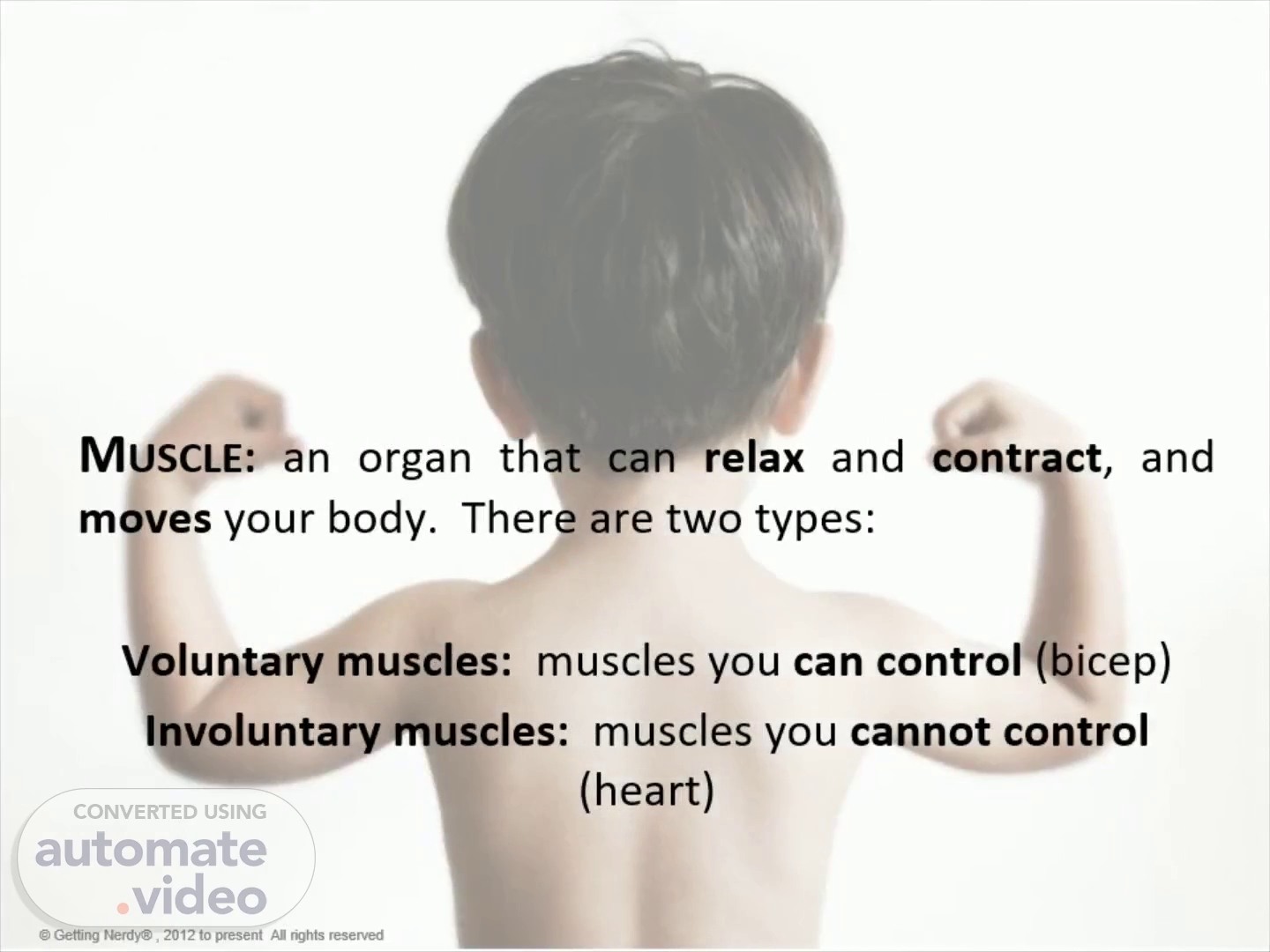
The Skeletal, Muscular, and Integumentary Systems
Scene 1 (0s)
[Audio] Muscle: an organ that can relax and contract, and moves your body. There are two types: Voluntary muscles: muscles you can control ( bicep) Involuntary muscles: muscles you cannot control ( heart).
Scene 2 (21s)
[Audio] SKELETAL MUSCLE Moves bones Voluntary Tendons connect muscle to bone Contract quickly and tire more easily Look striped or striated Ex: Bicep, quadriceps, pectoral.
Scene 3 (44s)
[Audio] You move because pairs of muscles work together One end of the muscle attaches at the end of a bone by a tendon The opposite end of the muscle attaches to an adjacent bone Muscles always pull against the opposite bone.
Scene 4 (1m 2s)
[Audio] SMOOTH MUSCLE Regulates blood pressure, digestion, and other internal functions Involuntary Ex: muscles in the stomach, bladder, blood vessels.
Scene 5 (1m 19s)
[Audio] CARDIAC MUSCLE Found only in the heart Involuntary Can beat independently of input from the brain Striated (striped) What similarities does cardiac muscle share with skeletal and smooth muscle?.